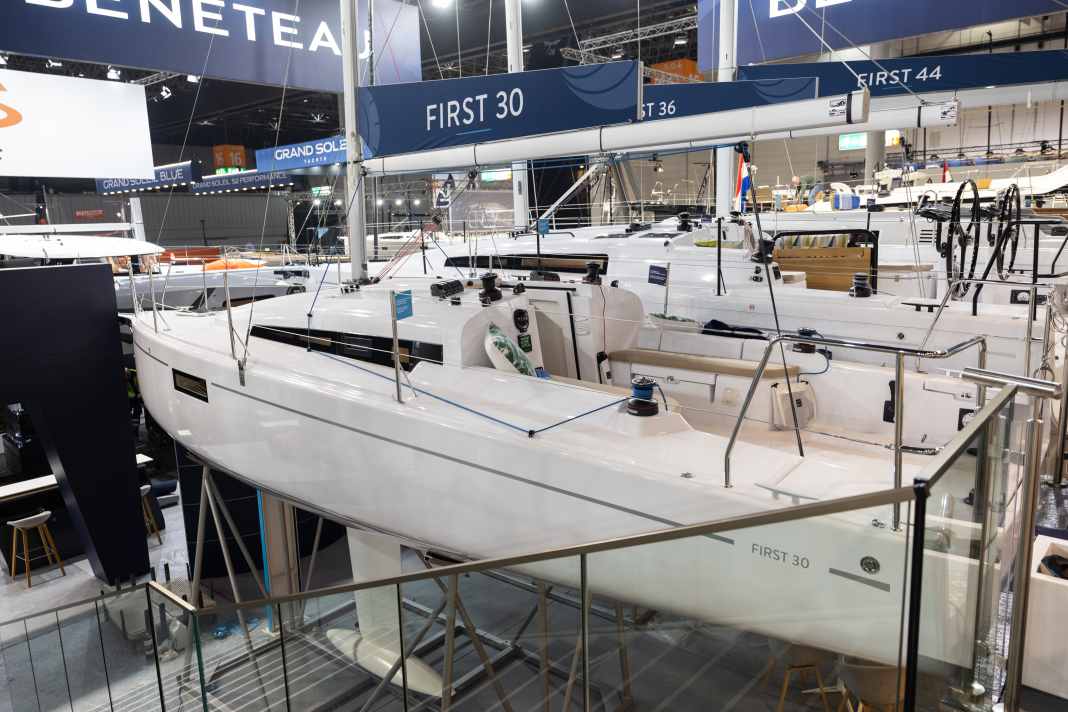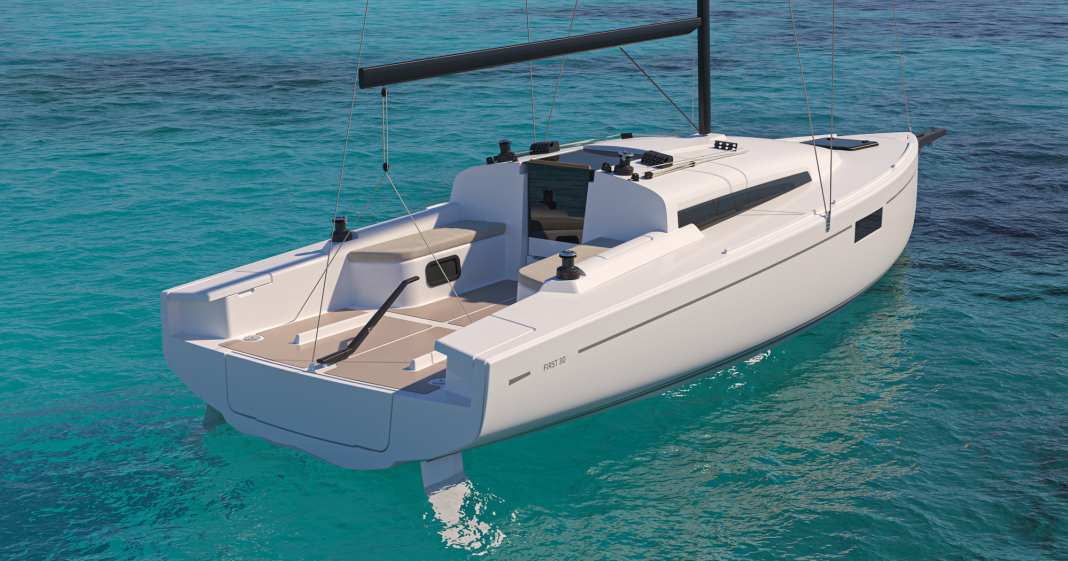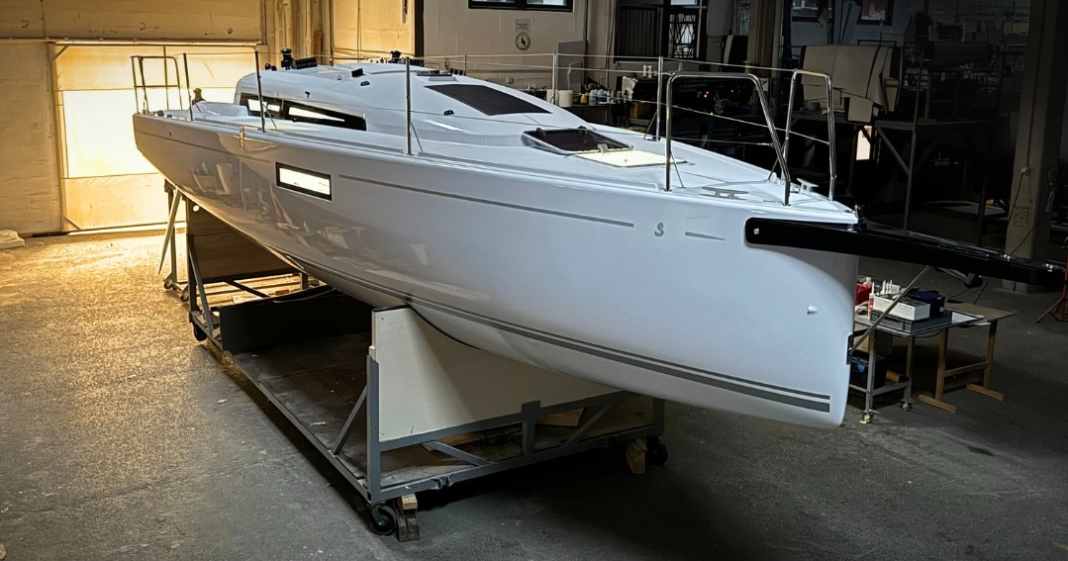





We have already reported on the most interesting new product of the 2025 model year several times since September and also closely followed the construction of the prototype. We link to the reports below. However, what we were able to inspect in detail yesterday on the eve of boot Düsseldorf offered some very positive surprises.
The Performance Cruiser, with which Beneteau wants to enable effortless gliding in moderate winds, showed an astonishingly successful design, especially below deck, which is downright loving despite its minimalism.
The overall modern, harmonious impression is reinforced by really good, practical solutions. The forward cabin, for example, is really spacious for a nine-metre boat; the double berth measures 1.40 metres wide in the shoulder area and is not too narrow in the foot area either. Great! It's a little narrower aft, not in width, but in length on the inboard side of the berth. Nevertheless, two sailors can still be accommodated reasonably well here, unless one of them moves into the saloon.
It's the real hit because it's bright, friendly and extremely cosy. Six people can chat for hours on thick cushions with excellent seat depth and a pleasantly angled backrest - or dine. The double-leaf table also has plenty of space.
Storage space can be found under the lounge sofas; on the construction number one, the plywood board that supports the upholstery is still in one piece. However, it is to be divided so that, like the upholstery, it provides segment-by-segment access to the compartments, which are neatly sealed with topcoat. There is also easily and quickly accessible storage space behind the backrests - more than on some cruising boats of this size.
The galley and wet room are somewhat more minimalist than usual, but are always functional and adequate. The lighting, mainly indirect, but also with reading lights in the compartments and ceiling spotlights above the saloon, skilfully sets the scene for the interior - activated by illuminated buttons, which alone are enough to make you love the boat - and of course: they are also used to dim the concealed LED strips.
There are still a few imperfections here and there, which are common with prototypes: The edge mouldings on the saloon table, for example, have not been sanded cleanly and have not been painted over; the veneer will rub off easily there. The cutlery drawer in the galley runs sluggishly. The swing-up companionway, under which the Yanmar diesel is located, is slightly in contact with the bulkhead to the wet room. But these are points that have long been on the to-do list at Seascape, where the boat was designed and is built.
It is therefore worth visiting the Beneteau stand, centrally located in Hall 16, to experience the First 30 for yourself. At around 120,000 euros, it costs no more than the Oceanis 30.1, its sister designed for cosy cruising. But what it lacks in volume and headroom, it will make up for in sailing pleasure. We will soon be trying it out in an exclusive test!
Here is the previously published report from YACHT online on the First 30:


